Nature Trail 3: North Road, Church Lane, The Baulks
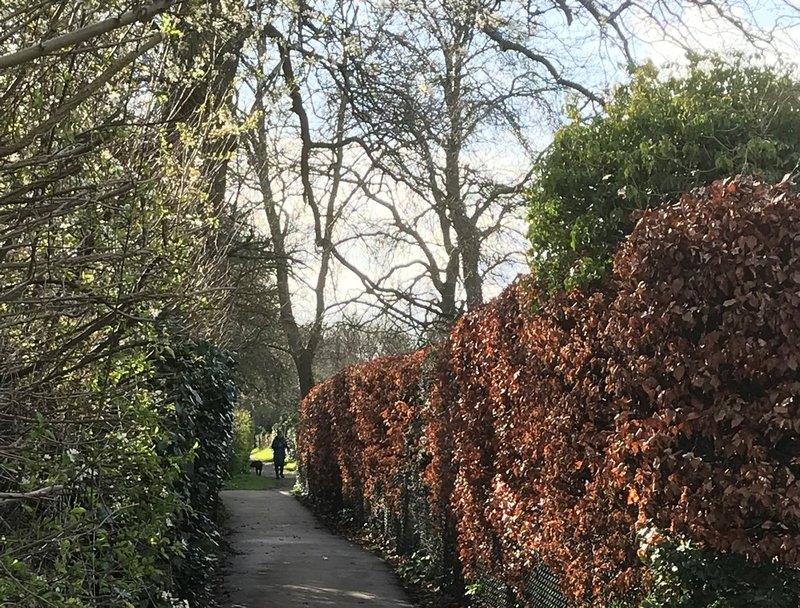 Thirty-minute ramble along pavements and sealed paths. Suitable for buggies. Blossom, snowdrops and daffodils in March and April; wild garlic in May.
Thirty-minute ramble along pavements and sealed paths. Suitable for buggies. Blossom, snowdrops and daffodils in March and April; wild garlic in May.
Numerous species of bird forage in the trees and hedges along this route, including chaffinches, goldfinches, robins, blackbirds, and woodpeckers. You could try downloading a bird-song identifying phone app such as Merlin before you set off to help you to find out which birds are around.
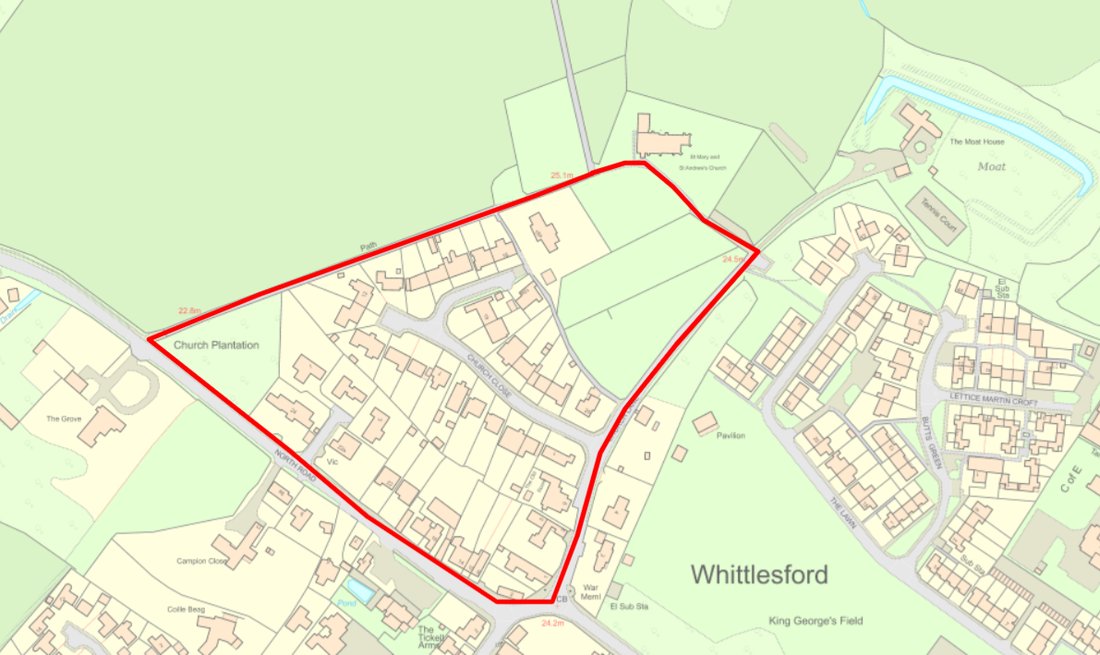
Step 1
With your back to the door of the Tickell Arms, cross the carpark and then North Road, and turn right along the pavement.
Look out for:
The imposing timber-framed Guildhall, dating from the late 15th or early 16th centuries, which in its time has been used as the village workhouse, a school room, and private dwellings. The small tree by the timber gate in the brick wall is a mulberry, favourite food of the silk-worm moth’s caterpillars, introduced from China in the 16th century.
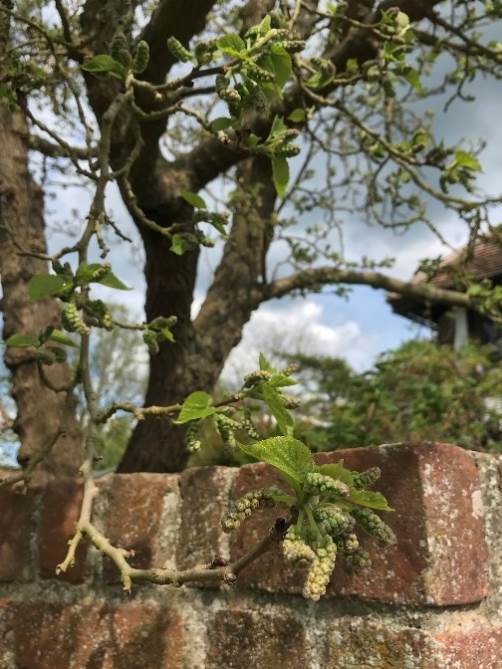
Step 2
Turn left by the telephone box into Church Lane.
Look out for:
Large fuzzy bright green leaves and white flowers of Comfrey growing round the telephone box. Although it is also called ‘knitbone,’ referencing its use in herbal medicine, it can cause liver damage, so best left for the bees and hoverflies who love its flowers.
There is a larch tree behind the garden wall on the left, identifiable by its numerous small cones which stay on the tree all winter, although the needles fall. Opposite there is a lime tree.
Near the dog poo bin, you can see a native box shrub, covered in small white flowers in spring.
In the gardens of Lawn Cottage there are honeysuckle, lilac and old yew trees growing. Look carefully in the trees and you might spot a dead one with a variety of round nest holes, one of which has been used by lesser spotted woodpeckers. This smallest of our three native species has declined by more than 80% since the 1970s to less than two thousand in the country, partly because dead trees like this one often get tidied away.
The walled garden on your left has been there since the 1700s. Generations of villagers have carved their initials into the bricks, including Harry Douglas, a Sunday school teacher and Maynards employee who was once in charge of servicing the Buckingham Palace chaff cutters.

Step 3
At the end of the brick wall on your left, turn left towards the church.
Look out for:
The tree standing in the middle of the parking area is a London Plane tree. This species is not native, but was widely planted across the capital, and the country, in the 18th Century. This one can be seen, already well established, in paintings from the 1850s. Depending on the time of year you may be able to see the large sycamore-like leaves, amber in autumn, or the fuzzy spherical fruit: these break up over the winter releasing the seeds, which are dispersed by the wind. The camouflage pattern bark, which sheds in large flakes, giving the tree its famous ability to withstand air pollution, can be seen all year round.
If you stand in the parking space at the church end of the row and look up to the top of the tree, you might be able to spot the large nest holes of a small jackdaw colony. Jackdaws are our smallest crows, easily distinguished from their larger relatives by their blue eyes, and their metallic ‘chyak, chayk’ call. They forage for a huge range of food and have been found to be even better than chimpanzees at sharing it, sharing food that they do like more than food that they don’t.
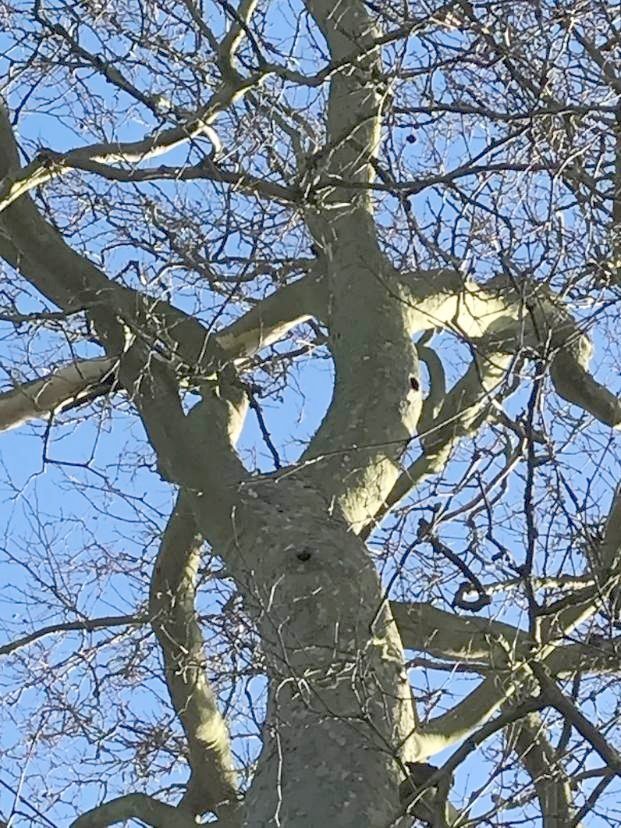
Step 4
Carry on into the churchyard, following the gravel path round to the left.
Look out for:
Violets, snowdrops, celandines, and primroses in spring. The little flowers of blue speedwell are around for longer, from March until June.
The large copper beech tree in the corner of the church yard, with its purple leaves, provides food for ‘treble lines’ and ‘beautiful hook-tip’ moths. More than forty species of moth have been recorded in the churchyard on one night in May. Full plant species list and moths list can be found in this PDF.
In summer you may be able to hear swifts ‘screaming’ overhead. These small birds migrate from Africa each year to eat our insects and airborne spiders, but their numbers are declining rapidly because the cracks in house and church roofs that they nest in disappear when buildings are renovated. A nest box has been installed in the church tower, and the sound you hear is probably the recording that is being played to lure them in so that they find their way to it. They were seen investigating the nest box in 2023, so it is hoped that they will move in soon…
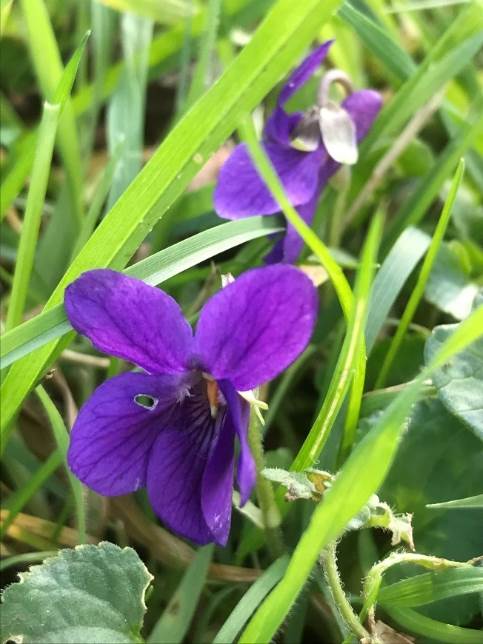
Step 5
When you come to the lampposts, keep going straight ahead onto the tarmac path. Be careful of cyclists using the national cycle route.
Look out for:
Arum lilies, or cuckoo pint, like growing on the bank on the right. They attract flies to pollinate them by being up to 15 degrees warmer inside their flowers than out.
There is a large oak tree on the left in the hedge. In summer you might be able to look up and see purple hairstreak butterflies here, as oaks are their only food source.
In early spring there will be white plum blossom in the hedge all the way along this path. The beech hedge on your right-hand side keeps its leaves all year and will make a lovely rustling sound on a breezy day. The new leaves, which are lime green when they first sprout, have been used as food since ancient times, and are supposed to taste citrusy.
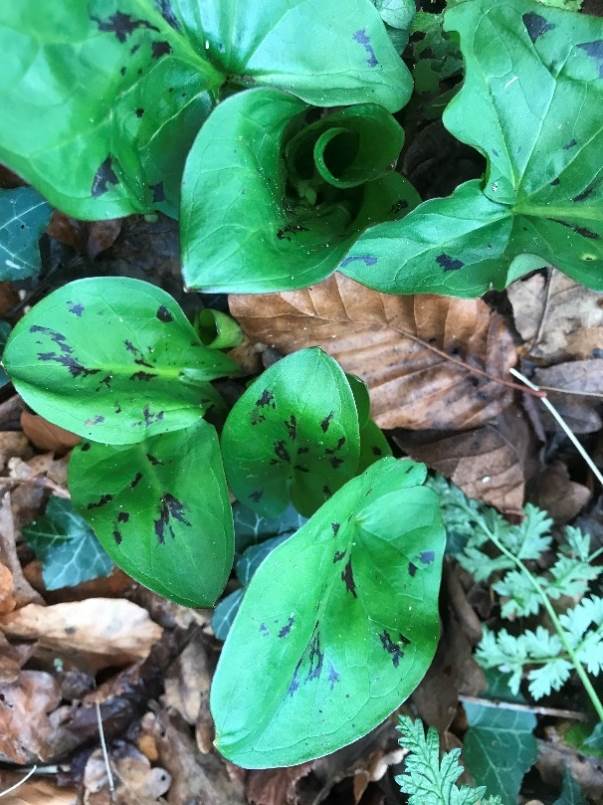
As you walk alongside the field on your right, keep an eye and ear out for buzzards and red kites, both of which can sometimes be seen scouting for earthworms if the soil has recently been ploughed. Sky larks can also be heard above this field.
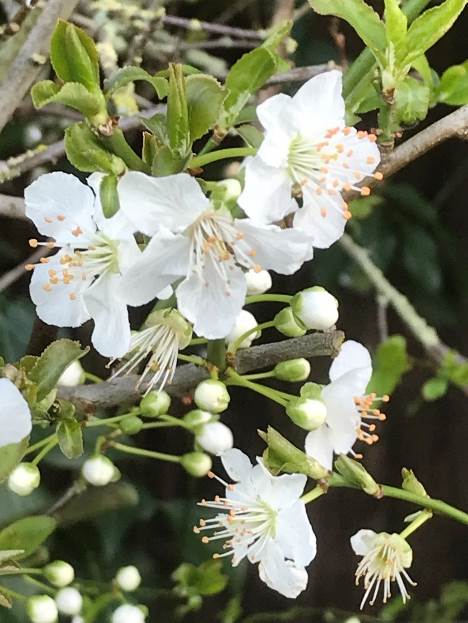
Towards the end of this path, when you have nearly reached the gates at the end, look in the wooded garden on the left, which used to be part of the garden of the large old vicarage, to see wild daffodils growing in amongst the ivy, with pale yellow petals surrounding a darker trumpet. Later in the spring wild garlic, or Ramsons, grow along this stretch of the path, which you can identify by the globes of white flowers if the smell doesn’t give them away first!
Greater spotted woodpeckers frequent these trees: if you see one taking off across the field you will be able to identify it by its bouncing flight. Even if you don’t see one, you might hear its loud call, or in spring, its drumming courtship display. A woodpecker’s tongue is long enough to stick out several centimetres beyond the end of its beak; when it is not in use it’s coiled up round the back of the woodpecker’s brain, possibly helping it to cushion its brain when it is hammering on a tree.
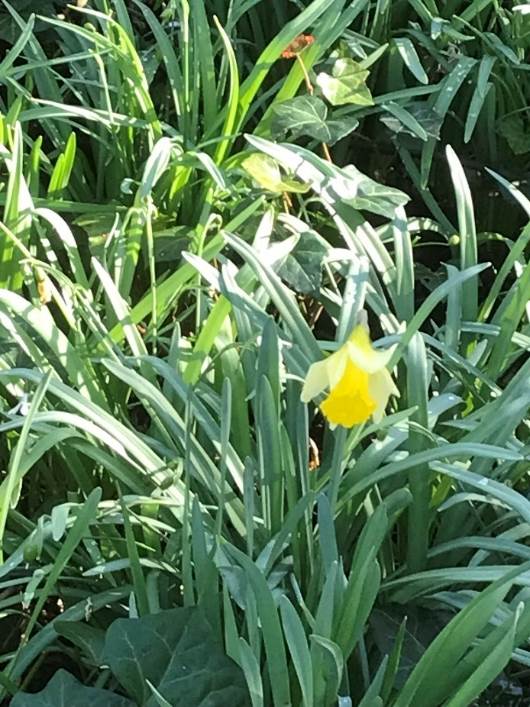
Step 6
At the end of the path turn left onto the pavement of North Road. After approximately two hundred metres, you will see the Tickell Arms on the other side of the road.
Look out for:
The evergreen ilex, or holm oak tree above the post-box of the Grove, opposite where the path comes out, is a native of the Mediterranean, and would not look amiss on a Greek island.
On the high bank beside the road on the left, you might see dog’s mercury growing in amongst the more familiar ivy. It’s not the showiest of woodland plants but can indicate that an area has been woodland since ancient times.
The bank outside number 21 is a great place to look for small wildflowers, such as knotted hedge parsley and red dead nettle. As the name implies, it can’t hurt you, but has gained the advantage of being left alone by evolving to look like a little pink-flowered stinger.
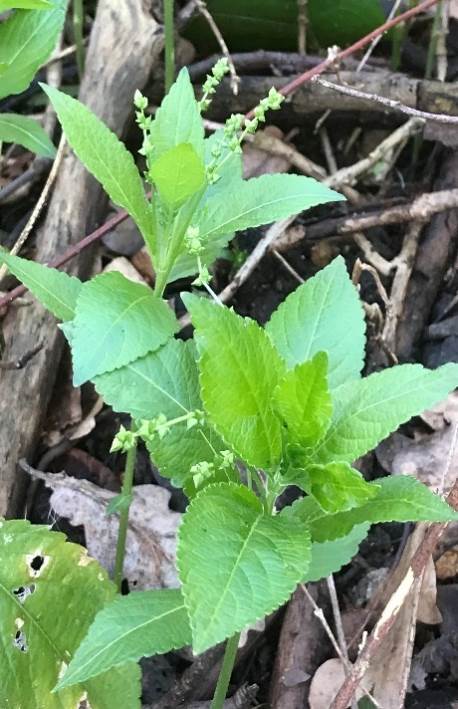
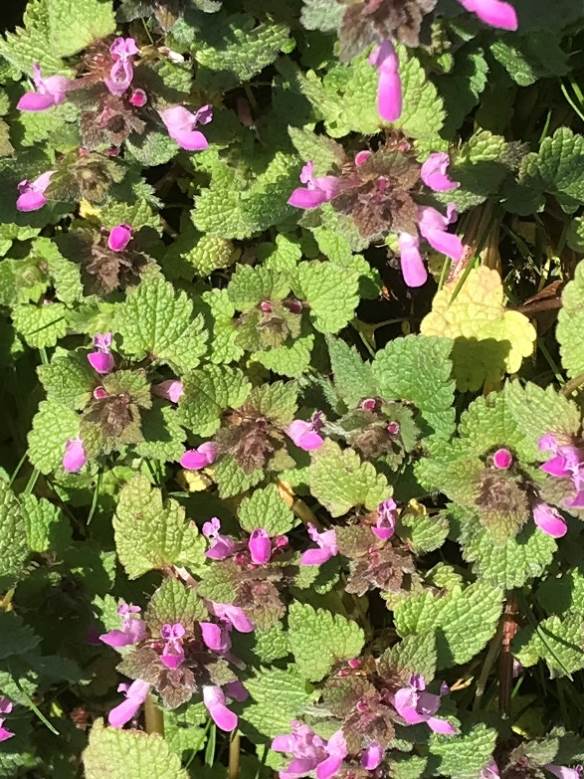
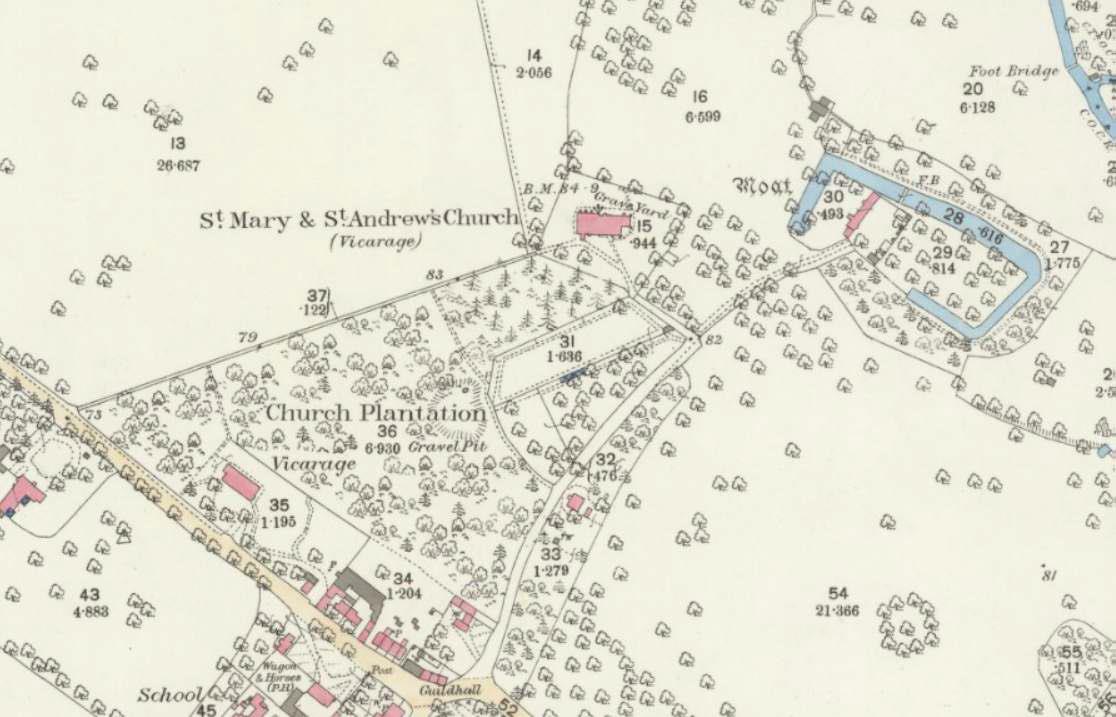
Our other nature trails can be found at https://www.ecowhittlesford.org.uk/nature-trails
